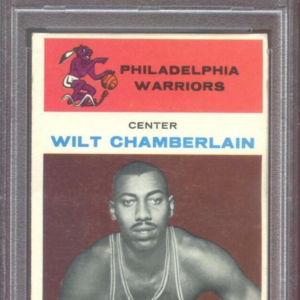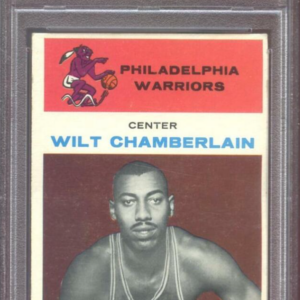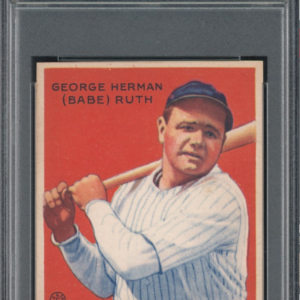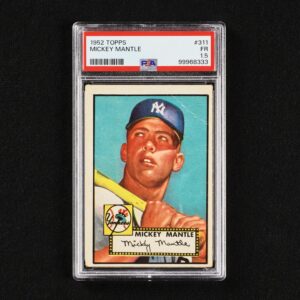The basketball card collecting world has long been embroiled in a debate that touches on the heart of sports memorabilia: which card represents Michael Jordan’s true rookie card? The contenders are the 1984-85 Star #101 and the 1986-87 Fleer #57. This debate isn’t just about determining a rookie card; it’s a discussion that encompasses the evolution of the trading card industry, authenticity concerns, and the changing standards of grading companies.
The Star #101 Michael Jordan card was issued in 1984, the year Jordan made his NBA debut with the Chicago Bulls. It was part of a limited distribution, primarily through team sets and not in the conventional pack form, which was the norm for trading cards at the time. This limited distribution plays a crucial part in the card’s story and its classification.
The Fleer #57 Michael Jordan card, released in 1986, is often heralded as Jordan’s official rookie card. The Fleer set was widely distributed and available in pack form, aligning with the traditional model of card distribution.
The Star #101 card is often labeled as an XRC, or an extended rookie card. This classification stems from its limited distribution and the fact that Star Company cards were not widely available in retail stores. XRCs are typically cards that precede a player’s first widely released card, which in Jordan’s case, is the Fleer #57.
Professional Sports Authenticator (PSA), a leading grading company, has long been reluctant to grade Star cards, including the 1984-85 Star #101 Jordan card. This reluctance was due to the high number of counterfeits and the challenges in authenticating them. However, in recent years, PSA has begun grading these cards, acknowledging their significance in the sports card market and advancing techniques for authentication.
The argument for the Star #101 card being Jordan’s rookie card leans on its historical significance. It was the first card to feature Jordan as an NBA player and was produced closer to his actual rookie year. On the other hand, the Fleer #57 card fits the traditional definition of a rookie card – widely distributed and available in packs to the general public.
Market perception plays a significant role in this debate. The Fleer #57 card is more recognized and sought after by collectors, often commanding higher prices in the market. This recognition is partly due to Fleer’s status in the industry and the card’s wider availability.
The debate over Michael Jordan’s true rookie card – the 1984-85 Star #101 or the 1986-87 Fleer #57 – is a complex one that reflects the nuances of the sports card collecting world. It encompasses historical context, distribution methods, and the evolving standards of card grading. While the Fleer #57 is widely accepted as Jordan’s rookie card, the Star #101 card’s historical significance cannot be overlooked, offering a fascinating glimpse into the early days of Jordan’s legendary career and the intricacies of sports memorabilia collecting.
The debate between the Star #101 and Fleer #57 cards significantly impacts collectors and investors. For purists and historians, the Star #101 card holds a special place as it chronologically aligns with Jordan’s entry into the NBA. However, investors and mainstream collectors often prefer the Fleer #57, considering it the ‘official’ rookie card due to its wide distribution and recognition.
The challenge of authenticity, especially for the Star #101 card, cannot be overstated. The market has been flooded with counterfeits over the years, making authentication a crucial and challenging process. PSA’s decision to start grading these cards has provided a new level of legitimacy, although it also opens up debates regarding grading standards and the identification of authentic cards.
The distribution method of the Star #101 card — through team sets and not traditional packs — plays a significant role in this debate. Some argue that this method of distribution makes it less of a ‘true’ rookie card compared to the Fleer #57, which was distributed in a manner familiar to collectors as the standard for trading cards.
This debate also highlights the evolution of the sports card market and the perceptions of what constitutes a rookie card. The Star #101 card represents a period in the card industry where distribution and marketing were vastly different from the time of the Fleer #57 release. As the market evolves, so do the perceptions and definitions within it.
Ultimately, the question of which card is Michael Jordan’s true rookie card may come down to personal preference and interpretation. The Star #101 card offers historical significance and a direct connection to Jordan’s rookie season. In contrast, the Fleer #57 card provides a more traditional and widely accepted rookie card experience. Both cards are invaluable pieces of basketball history and hold a special place in the world of sports memorabilia.
As the debate continues and PSA begins grading more Star cards, the market may see shifts in the value and perception of these cards. Collectors and investors alike will need to stay informed and adaptable as the landscape of sports card collecting continues to evolve. Regardless of which side of the debate one falls on, both the 1984-85 Star #101 and the 1986-87 Fleer #57 Michael Jordan cards remain iconic representations of one of basketball’s greatest players and a testament to the dynamic nature of sports memorabilia collecting.






